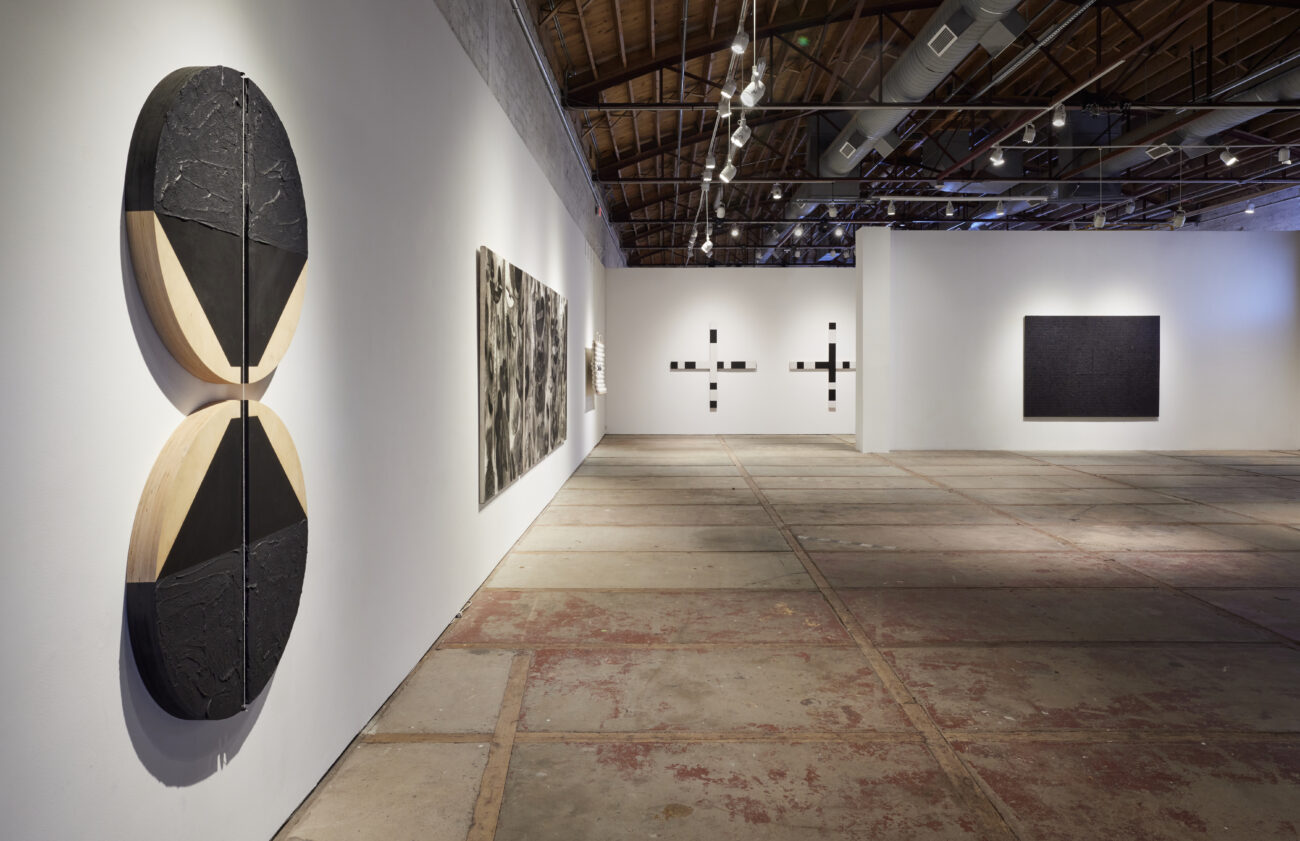Tia Collection is pleased to share our second exhibition in partnership with Chatter, on view through February 3, 2024 at 1050 Old Pecos Trail in Santa Fe, NM. A closing open house will be held on Saturday, February 3, 11:30am–2:00pm. In Tia x Chatter: The B/W Show, curator Sarah Greenwood looks through a lens of black and white to present works from the collection by artists Tony Abeyta, Rosemarie Castoro, Torkwase Dyson, Eric-Paul Riege, David Simpson, Tony Smith and Judy Tuwaletstiwa. Premiering for the first time in New Mexico is Riege’s let the Holy ppl watch over U and Me [2] in addition to Castoro’s Guinness Martin (1972), which also makes it’s North American debut.
From The Curator: As the Media Manager for Tia Collection, I’m well aware of how vibrant colors can move viewers—one of my favorite works in the collection is currently on loan to Vladem Contemporary (please visit Yayoi Kusama’s bright and colorful polka-dot pumpkin there, courtesy of Tia). In contrast, the artists on view in The B/W Show demonstrate the power of bold black, creamy white and all shades in between to crisply define a composition and show the lyrical side of this classic combination. To paraphrase what Judy Tuwaletstiwa says of her work on view in this show—you can let your eye rest—as well as wander. These works are complete, yet they are moving.
I hope you feel the same. – Sarah Greenwood.
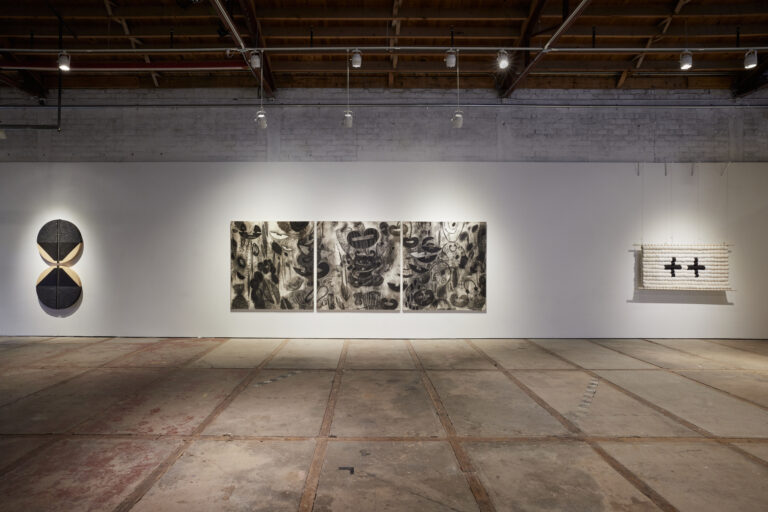
Tony Abeyta, Diné (Navajo), born in Gallup, NM in 1965, is a contemporary artist working in mixed media paintings and sculpture. Abeyta was born into a distinguished family of Diné artists whose important family legacy and history was recently celebrated in the Wheelwright Museum of the American Indian’s Abeyta: To’Hajiilee K’é. Abeyta is a previous recipient of the New Mexico Governor’s Excellence in the Arts award, has been recognized as a Native Treasure by the Museum of Indian Arts & Culture and, in 2023, was awarded the U.S. Department of State Medal of Arts.
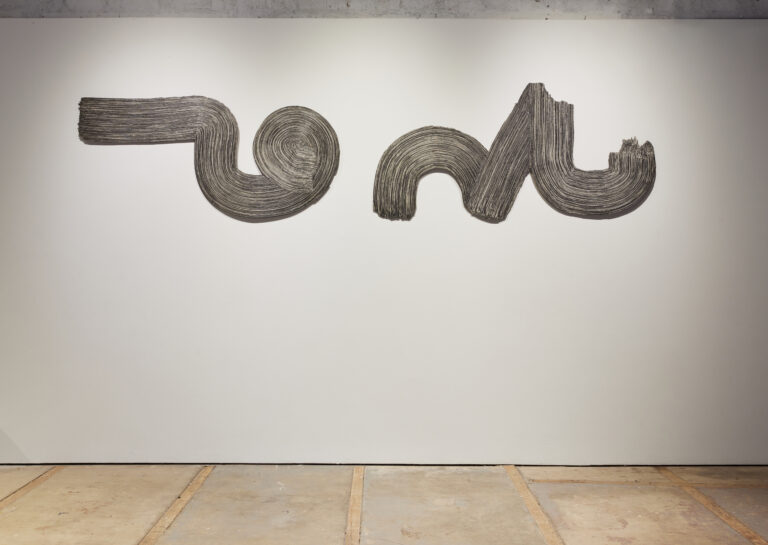
Rosemarie Castoro (1939 – 2015) lived and worked in New York her entire life, becoming a central figure in the city’s Minimalist and Conceptualist Art scene. Finding early inspiration in experimental dance and choreography while a student at the Pratt Institute and in subsequent collaborations with dancer Yvonne Rainer, Castoro’s work throughout her life exhibited a distinctly performative character, along with an understanding of space and movement. In 1968—a time of political unrest in the USA—Castoro abandoned colour and started to engage with Concept Art, Street Works, Concrete Poetry and Post-Minimal sculpture.
Torkwase Dyson (b. 1973) describes herself as a painter working across multiple mediums to explore the continuity between ecology, infrastructure, and architecture. Examining environmental racism as well as the history and future of black spatial liberation strategies, Dyson’s abstract works grapple with the ways in which space is perceived and negotiated, particularly by black and brown bodies. In 2019, Dyson’s solo exhibition I Can Drink the Distance was on view at The Cooper Union, New York, and her work was also presented at the Sharjah Biennial.
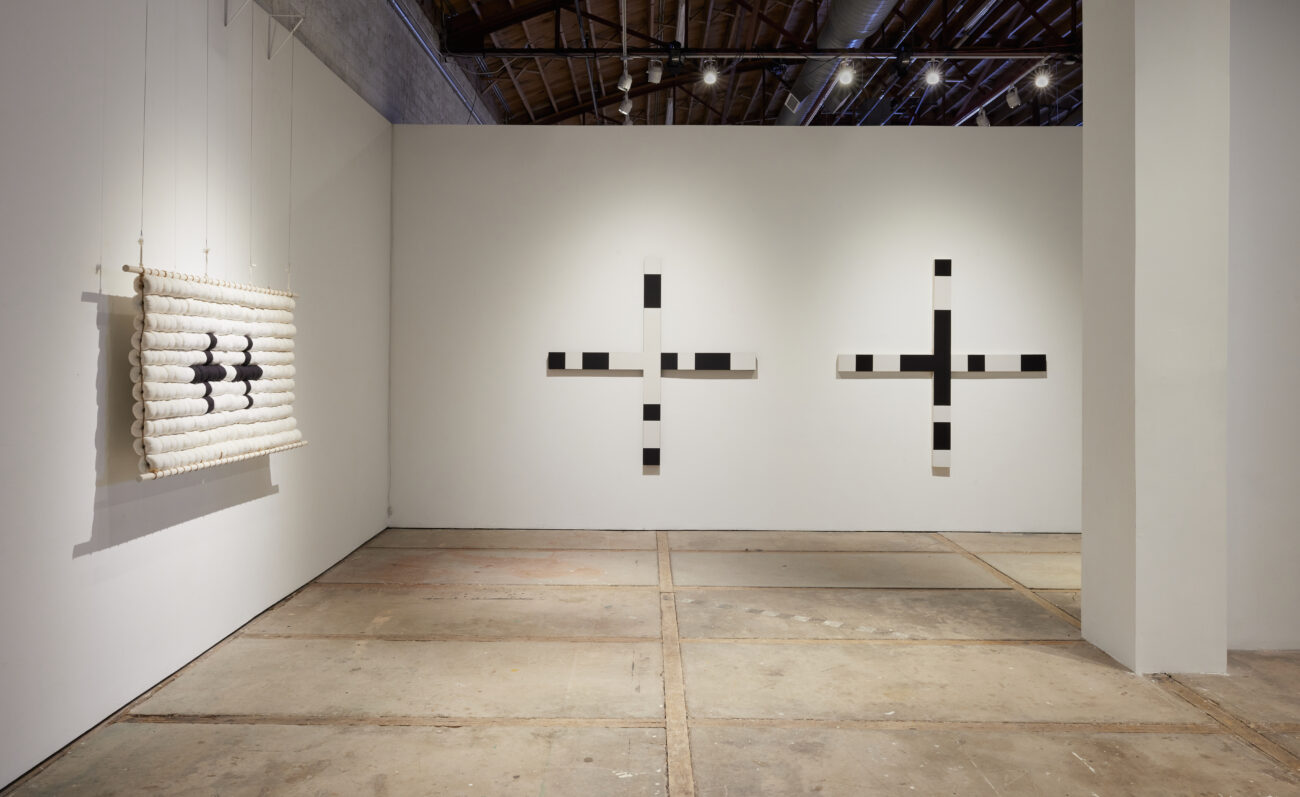
Eric-Paul Riege, Diné (Navajo), is a weaver and fiber artist working in collage, durational performance, installation, woven sculpture and wearable art. Using weaving as both means and metaphor to tell hybrid tales that interlace stories from Diné spirituality with his own interpretations and cosmology, he understands his artworks as animate and mobile. His work has been exhibited in solo and group shows at Hammer Museum, Los Angeles, CA; SITE SANTA FE, NM; and Institute of Contemporary Art Miami FL, among others. Riege is a member of the Charcoal Streaked Division of the Red Running Into the Water clan. He was born in 1994 and is based in Gallup, NM.
David Simpson (b. 1928) is a reductive painter central to the Bay Area art scene since the 1950s. He received his BFA from the California School of Fine Arts (now SFAI) and MA from San Francisco State College (now SFSU). His diverse painting practice weaves together impulses of minimalism and hard-edge abstraction with those of the California Light and Space movement, to forge an entirely singular creative vision. Significant exhibitions include Fifty Californians, Whitney Museum of American Art, New York, NY (1962); Americans 1963, curated by Dorothy Miller, Museum of Modern Art, New York, NY (1963); Post Painterly Abstraction, curated by Clement Greenberg, Los Angeles County Museum of Art, CA (1965); Art Across America, San Francisco Museum of Modern Art, CA (1965); and The West Coast Now, Portland Art Museum, OR (1968).
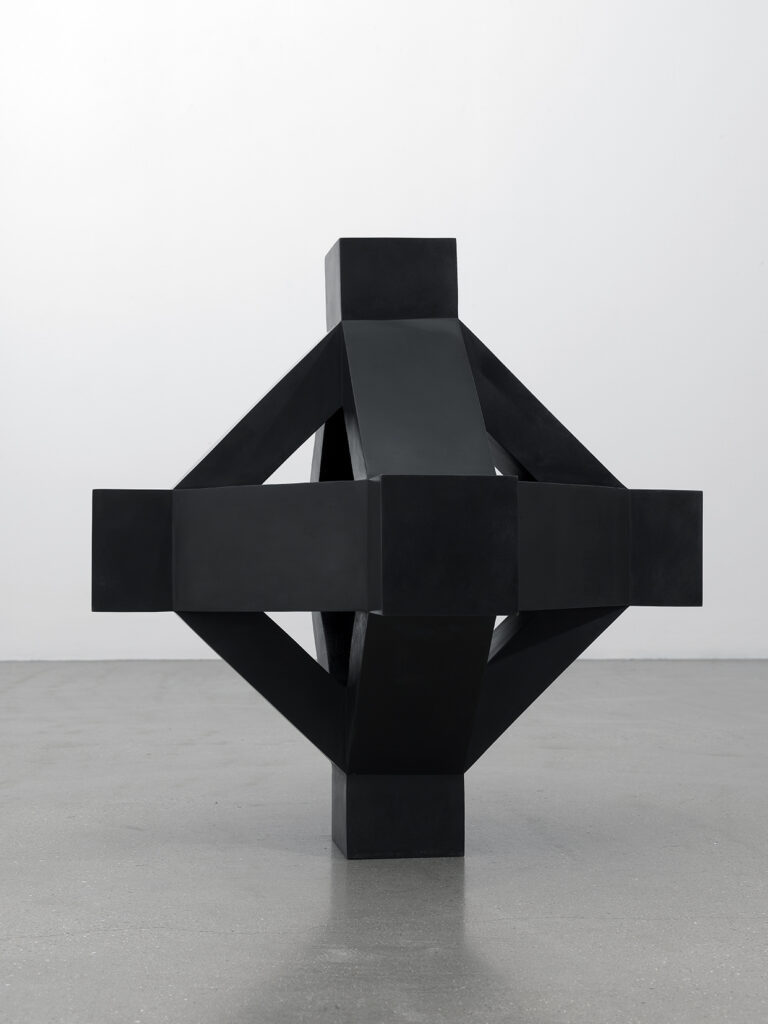
Tony Smith (1912 -1980) studied painting at the Art Students League in New York and attended the New Bauhaus in Chicago before apprenticing for Frank Lloyd Wright in 1938–1939. For the following two decades, he worked professionally as an architect and held teaching positions at numerous institutions in New York and Vermont. In the early 1960s, Smith turned his focus to sculpture, with his architectural background informing one of his most radical innovations—having his work industrially fabricated. Widely recognized for his large-scale, modular works, Smith was included in the seminal group exhibition Primary Structures at the Jewish Museum, New York, in 1966. His profound achievements in American sculpture have been honored with retrospectives of his work at The Museum of Modern Art, New York (1998); Institut Valencià d’Art Modern (2002); Menil Collection, Houston (2010); and Los Angeles County Museum of Art (2017).
Judy Tuwaletstiwa’s (b. 1941) memories and personal experiences create a complex web of inspiration that invites materials to find an unexpected voice in her art. Tuwaletstiwa uses a broad range of materials including kiln fired glass, fiber, clay, handmade paper, quills and wood sticks. An artist, writer and teacher, Tuwaletstiwa received her BA in English Literature from UC, Berkeley in 1962, and her MAT in Medieval Literature from Harvard University in 1963. A celebrated artist with a long career of residencies, exhibitions, and collections to her name, she was the recipient of the New Mexico Governor’s Award for Excellence in the Arts in 2023. Her art lives in private, public, and museum collections. Special editions of her three books, including her 2016 book, Glass, published with Radius Books, reside in libraries such as the Corning Museum of Glass’ Rakow Library and Yale’s Beinecke Rare Book & Manuscript Library.
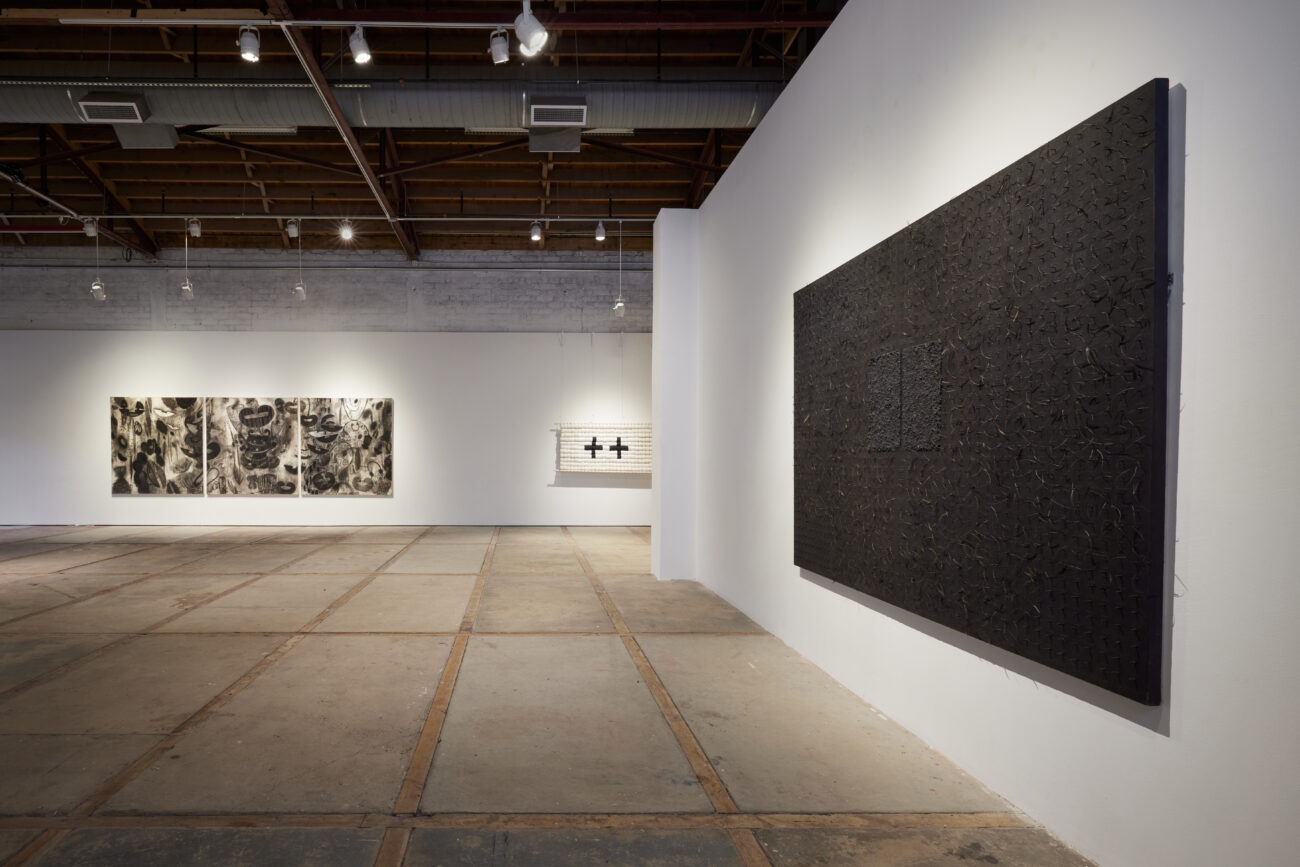
About Tia x Chatter: Tia Collection, a global art collection with a mission to support artists and institutions through its acquisitions and lending programs, has partnered with non-profit musical ensemble Chatter. Tia x Chatter provides a backdrop of loaned artworks from the collection for Chatter’s Santa Fe programming. Exhibitions are curated by Tia staff on a bi-monthly, rotating basis. For tickets to Chatter North’s Saturday morning performances, visit chatterabq.org.
Photography by Brad Trone.

